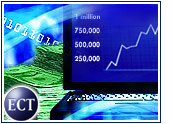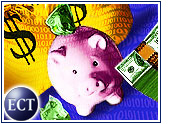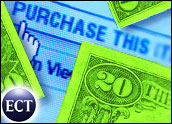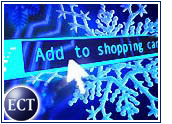
The amount of money that American consumers are losing to fraudulent Internet schemes is growing,according to a report released Thursday by the National Consumers League(NCL).
The average loss per person rose from US$310 in 1999 to $412 during the firstnine months of 2000, the study found.
“We’re seeing some positive trends, but there are also alarming signs oftrouble, especially concerning the use of debits from consumers’ bankaccounts in payments related to certain categories of fraud,” said NFIC/IFWdirector Susan Grant.
Going, Going, Gone
The Washington, D.C.-based watchdog group compiles its statisticsfrom reports filed from January through September with its National FraudInformation Center/Internet Fraud Watch (NFIC/IFW) programs.
Its report provides a snapshot of scams that are flourishing on the Web.
The Net auction industry, for example, has created its own breed of e-con artist, looking to capitalize on the millions of transactions that occur each day. Net auction fraud continues to spark the largest number of complaints, the report found.
Ups and Downs
On a positive note, the NCL said that incidents of fraud in online auctions may be decreasing. Seventy-nine percent of complaints filed this year wererelated to auction fraud, an eight-point decline from last year’s numbers.
Even so, a study released earlier this year by JupiterCommunications (now Jupiter Research) predicted thatconsumer-to-consumer online auction sales will spike from $3 billion in 1999to $15.1 billion in 2004, opening the door for a concurrent increase in fraud cases.
The NCL findings on auction fraud dovetail with federal statistics. Last month, the U.S. Federal Trade Commission also cited auctionfraud as the No. 1 online scam, with the number of reported casesballooning from 100 in 1997 to a whopping 10,000 in 1999.
Garden Variety Dot-Cons
The NCL said that other categories ofInternet fraud are on the rise, including work-at-home scams, general merchandisesales, Internet access services and advance fee loans.
Although Web sites are the most common channel for Internet fraud offers tobe peddled to consumers, the NCL report found a dramatic 700 percent increase inthe number of initial contacts made by con artists in newsgroups, from just0.5 percent in 1999 to four percent through September.
Handing Over the Money
Three-quarters of Internet fraud victims are paying offline by check ormoney order, the report found.
However, the number of fraudulent transactions conducted with credit cardsis increasing, nearly tripling from 5 percent in 1999 to 14 percent duringthe first nine months of this year. Researchers attributed the growth in credit card use to the inroads made among Web users by Internet auction sites, which make it easierfor buyers to immediately pay for goods and services online with a creditcard.
Lenders Left Holding the Bag?
To avoid being conned out of merchandise, the NCL advises consumersthat credit cards should be their primary method of payment to safeguardtheir right to dispute charges in instances of fraud.
Such legal protections may begin to rankle financial institutions — which must swallow losses incurred through fraudulent schemes — if the number ofdisputed charges climbs, the report said.
Tapping Bank Accounts
According to the NCL, withdrawals from consumers’ bank accounts are by farthe most common methods of payment in phony online offers for credit cards,with 64 percent of victims allowing their account to be debited.
In other categories that top the Internet fraud list, such as work-at-homescams and advance fee loans, the payment methods are fairly similar andgenerally involve checks and money orders, the report said.
In contrast, the NCL found that an “astounding” 22 percent of online feeloan offers involve payment of cash, stripping the consumer of most legalprotection.
Crossing the Line
The global nature of the Web has also made it easier for tech-savvy criminalsto evade the controlling legal authority in regions where they conducttheir illicit businesses.
“Because the Internet has no geographic boundaries, cross-border fraud hasthe potential to explode,” said the report.
The report also predicted that this explosioncould be fueled by an increase in the number of consumers who make onlinepayments instead of sending checks or money orders.












































Social Media
See all Social Media